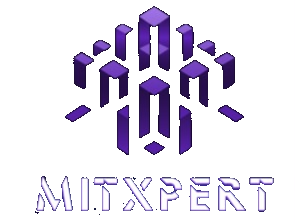In today’s digital landscape, safeguarding sensitive information and protecting systems from cyber threats is more critical than ever. Implementing best practices for cybersecurity is essential to mitigate risks and ensure business continuity. First and foremost, strong password management and multi-factor authentication (MFA) can significantly enhance security by adding layers of protection against unauthorized access. Regular software updates and patches are crucial to address vulnerabilities and prevent exploitation by cybercriminals. Employee training on recognizing phishing attacks and maintaining good security hygiene, such as avoiding weak passwords and using encrypted communication channels, is also vital. Additionally, organizations should implement a robust data backup strategy and have a clear disaster recovery plan in place to minimize the impact of any potential breaches. Finally, employing a Zero Trust Architecture (ZTA), where every access request is verified regardless of its origin, can help prevent unauthorized access and lateral movement within networks. By following these best practices, businesses can build a proactive cybersecurity posture that defends against evolving threats and protects both data and reputation.
Benefits of Cloud Migration
Cloud migration offers organizations a strategic edge by reducing IT costs, enhancing scalability, and improving operational efficiency. By moving to the cloud, businesses can eliminate expensive hardware, adopt a pay-as-you-go model, and scale resources based on demand. The cloud fosters seamless collaboration, supports remote work, and provides enhanced security through encryption, backups, and disaster recovery solutions. It also offers automatic updates, ensuring systems remain current without manual intervention. Cloud migration boosts innovation by providing access to advanced technologies like AI, machine learning, and big data analytics, which help organizations stay competitive. Additionally, it promotes sustainability by reducing energy consumption and utilizing renewable energy sources. With cloud migration, companies gain flexibility, security, and the tools to drive growth, ultimately positioning themselves for success in a digital-first world.
Latest Trends in IT
As we enter 2025, the IT landscape is shaped by groundbreaking technologies that promise to revolutionize industries and improve user experiences. Artificial Intelligence (AI) and Machine Learning (ML) are now deeply integrated into various sectors, powering AI-driven cybersecurity, personalized customer experiences, and content creation. Quantum computing is advancing, offering solutions in pharmaceuticals, finance, and logistics, while edge computing and IoT are enhancing real-time decision-making and efficiency in areas like autonomous vehicles and smart cities. Cybersecurity is shifting towards proactive measures like Zero Trust Architecture and AI-driven threat intelligence, while organizations embrace Green IT for sustainability. The metaverse and Extended Reality (XR) are transforming business, education, and entertainment, and blockchain is being applied beyond cryptocurrencies for secure, decentralized systems. With the expansion of 5G and the anticipation of 6G, connectivity and speed are improving, while low-code and no-code platforms are democratizing app development. Finally, human-centric technology design is prioritizing usability, accessibility, and mental well-being. As 2025 unfolds, these trends present endless opportunities for businesses and professionals to innovate and thrive in an increasingly digital world.



